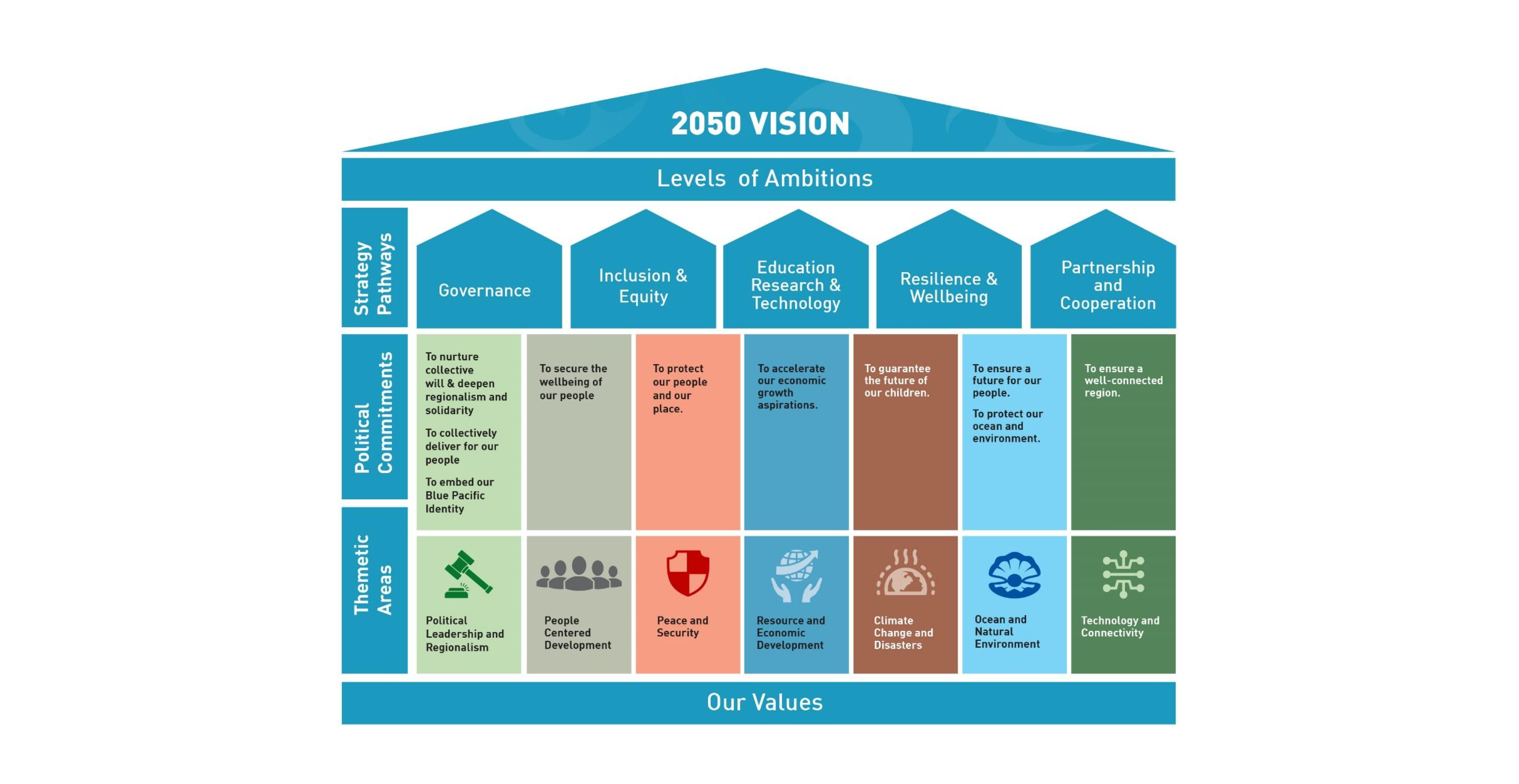The 2050 Strategy sets out our long-term approach to working together as a region.
The success of the 2050 Strategy depends on enhanced cooperation, strong leadership and the continued participation at all levels of society in its implementation. We seek the broadest support possible across our region to ensure full ownership and accountability in delivering on our shared objectives. This is our 2050 Strategy, and we will drive and deliver it together for the benefit of all Pacific peoples.
Foreword to the 2050 Strategy
The Blue Pacific Continent is our home, ocean, lands and common heritage.
As Pacific Leaders, we are strongly committed to ensuring the health and well-being of our people, and to human rights and equity for all. We place great value on our ocean and land, and celebrate a deep connection to our community, natural environment, resources, livelihoods, faiths, cultural values and traditional knowledge.
We work with our people to deliver on a vision that they will help to nurture. We welcome the support of our national and regional institutions in these efforts. We have often taken on challenges much bigger than ourselves. Many of our nations have gained political independence and have set new paths for their future. Our governance is maturing, and our people have much higher expectations of transparency and accountability. Our public services are supporting a gradual improvement of our wellbeing and quality of life. Much work remains, yet we are confident of success.
Leaders Commitment to 2050
As large oceanic countries and territories, we are the custodians of nearly 20 percent of the earth’s surface, and we place great cultural and spiritual value on our ocean and land, as our common heritage.
We occupy a vitally significant place in global strategic terms. As a consequence, heightened geopolitical competition impacts our Member countries. Further, there is increasing commercial and state-sponsored interest in our region’s ecological and natural resources. This is reflected in the global community’s present interest in the “Blue Economy” and suggests that there will be growing demand for our resources over the years to come.
Under current trends global temperature rise will exceed 1.5°C before 2040 and 2°C between 2041 and 2060 unless there are rapid, deep and sustained reductions in global greenhouse gas emissions1. To avert and manage the worst-case scenarios requires urgent, robust and transformative action globally, regionally and nationally. While collective greenhouse gas emissions from the Blue Pacific Continent is just over 1%2 of global emissions, we are at the front-line of the adverse impacts of climate change. Harnessing untapped potential for policy interventions to enhance carbon sequestration of the ecosystems and Exclusive Economic Zones of the Blue Pacific Continent could generate substantial climate benefits. The Blue Pacific Continent continues to experience damaging impacts of climate change and requires timely access to scaled-up, effective and sustainable climate finance.



